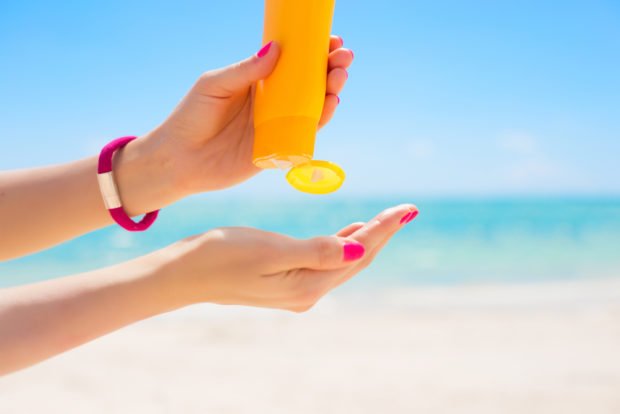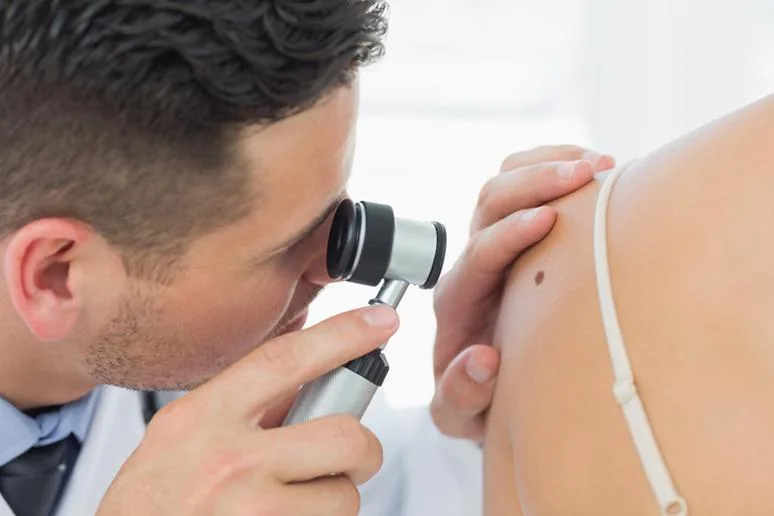Skin cancers are the most common group of cancers diagnosed worldwide, with more than 1.5 million new cases estimated in 2020. This cancer is more prevalent in certain countries, and the disease is more prevalent in men than women. We spoke to leading dermatologist Dr. Sian Hartshorne about the disease. What you need to know and how to manage potential risk.
What we need to understand about skin cancer risk
There are two main types of skin cancer: melanoma and non-melanoma. The most common non-melanoma skin cancers are basal cell carcinoma and squamous cell carcinoma.
Skin cancer represents a particular challenge for estimating incidence for several reasons. There are multiple sub-types of skin cancer, which can present problems when collating data.
For example, non-melanoma skin cancer is often not tracked by cancer registries, or registrations of this cancer are often incomplete because most cases are successfully treated via surgery or ablation. Due to these factors, it is likely that the reported global incidence of skin cancer is an underestimate.
Skin cancer has become a global crisis
Your skin is the largest organ in the body. Yet, like millions, you may be unaware of your risk of skin disease. Unfortunately, skin cancer does not get awareness like other cancers do, so it is generally not top of mind. Even without early detection, it can be deadly. Creating awareness not only helps people become more informed, but also supports people who would like to better understand the issue at hand.
Research
Dr. Hartshorne recalls that skin cancer awareness and research were only available in the late 80s and 90s. She adds that there wasn’t much knowledge of skin cancer back then. Often people did not know that their cancer was due to melanoma, a type of skin cancer that can develop from a mole.
However, Dr. Sian Hartshorne acknowledges that so much more research exists now on skin cancer, and therefore it’s much easier these days to gain access to information on skin cancer.
Furthermore, she shares how research done in 2015 has shown the number of skin cancer diagnoses, melanoma to be specific, has increased exponentially.
The impact of climate change
However, the number of deaths due to malignant melanoma has plateaued, due to new immunotherapy treatment, which has been saving many lives.
A big contributing factor to the awareness of skin cancer has a lot to do with climate change. The sun, more specifically ultraviolet radiation, has become much more intense.
Ultraviolet radiation is the main cause of sun-induced skin cancer. Understanding that the rays of the sun are damaging our skin is an important factor in protecting our skin from the sun. The skin needs to be less exposed and more protected from the sun in order to stop sun-induced skin cancers.

Kaspars Grinvalds/Shutterstock
The role of sunscreen in mitigating skin cancer risk
Dr. Hartshorne, who works in a coastal region of South Africa, recalls a time when a lot of patients came into her room with sunburn. Most patients had applied sunscreen but still got sunburned.
“I think our understanding of sunscreen is that we are protecting mostly from UVA and UVB. Our own natural SPF factor in a person who is able to tolerate sun without sunscreen is about 30 – 60 minutes. Sunscreens only last 4 – 5 hours. So if you put your sunscreen on at 08:00 in the morning, by midday the majority of your SPF factor is wearing off. The key is reapplication.” added Dr. Hartshorne.
She mentions that there are other means to protect yourself from the sun. These include wearing hats and long sleeve shirts
Melanoma skin cancer rates
According to the World Health Organization, total global melanoma skin cancer incidence and rates in 2020, showed that certain countries are at greater risk than others. For example, Australia had the highest overall rate of melanoma of skin in 2020, followed by New Zealand.
Sun risk differences between certain countries
There is a difference in sun ray strength between the northern and southern hemispheres. Dr. Hartshorne recalls having a patient who had a UV monitor and would travel between South Africa and North America, and measure the levels of UV Radiation.
The patient found that winter in South Africa measured the same level as summer in America and even Europe. In the summer, South Africa recorded double the level of UV rays than in America and Europe.
So as much as it feels cold in the winter in countries like South Africa, you can still burn and there still can be damage to your skin from the sun without you feeling the heat. What this shows is that certain populations in certain countries are more at risk than others.
Dr. Hartshorne shares how your typically fair-skinned, blonde hair and blue-eyed type of person can tolerate 10 – 15 minutes in the sun and is more susceptible to UV radiation. Whereas, light brown (olive skin tone) skin going to medium brown tone skin has more natural protection, but can still develop skin cancer.
She adds that in her experience, she has not seen much skin cancer in people with darker tone skin types, specifically in sun-exposed areas. However, she does see skin cancer on the soles of their feet and nails, which can be very aggressive.
This then makes for another question. Is there another factor causing skin cancer, as UV radiation does not cause skin cancer on the soles of one’s foot? The world of scientific research has yet to explore that. However, genetics do play a role in skin cancer as well.
A guide to reducing your skin cancer risk
There are many causes of skin cancer, however, these are a few that Dr. Hartshorne has highlighted:
- Genetics
- Ultraviolet light
- Archwelding light
- Chronic skin disorders such as discoid lupus erythematosus
Things to avoid taking
- Tanning tablets such as Melatonin tablets
- Beta Carotene vitamin A based
- Tan in a can
Things you can take
- Polypodium Leucotomos
- Nicotinamide (Vitamin B3 in higher doses)
- Combination of Vitamin C and Vitamin E
Understanding skin cancer risk
“In an existing mole, if the mole is increasing in size or any lesion on the skin that is increasing in size or if it’s changing in shape or colour. It may be getting lighter or darker. Also look out for symptoms – if it’s bleeding, itching or a strange feeling. This is a warning sign that there is a metabolic change that’s happening.” Says Dr. Hartshorne
Bottom line
Dr. Hartshorne appeals to everyone to use sunscreen that suits their skin tone.
If you want to be completely protected against both skin cancer and pigmentation changes in the skin, using a coloured (foundation like) base included in a sunscreen is highly effective.
Stay out of the sun at peak times, and wear protective clothing and a hat to keep your skin safe when exposed for a longer period of time.
Watch the full interview
To learn more about Skin Cancer Awareness for your health, watch the full interview below:
https://www.instagram.com/p/Cs7APZ5BPYT/?utm_source=ig_web_copy_link&igshid=MzRlODBiNWFlZA==





![women [longevity live]](https://longevitylive.com/wp-content/uploads/2020/01/photo-of-women-walking-down-the-street-1116984-100x100.jpg)









